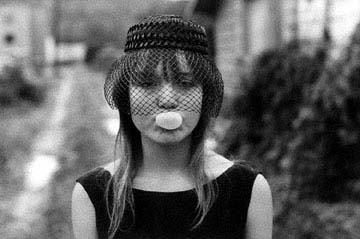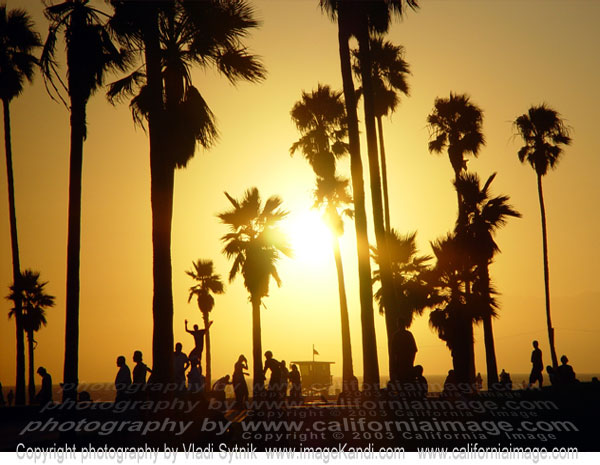One evening, my friend Keith Nolan asked me if I wanted to get into downtown
Los Angeles for a dinner and deaf social gathering. Why not?!? I took him up on it and went to Sunset Boulevard. We drove through the Hollywood Hills on those long winding roads, which was a pleasant and slightly dangerous experience if you’re talking while driving at the same time!
The Hollywood Hills are such a distinctive piece of real estate that I really do have a hard time finding some other place in the East to compare it with. DC is pretty distinctive by itself, with its crazy streets, rolling hills, beautiful old brick row houses, and full grown trees dotting the sides of walkways – but to compare it with Hollywood Hills is like comparing Jack to Simon from “The Lord of Flies” book… you can’t, because the two are on completely different planes. The hills are always visible from almost any place in the greater Los Angeles, because the landscape is so flat and the hills are always looming in the distance over you. In the San Fernando Valley (where I live), the hills are what separates me from the City of Angels, the real metropolis of South California. While I’m in Los Angeles, the landscape is still flat but the hills are high enough to prevent the smog from leaving Los Angeles and block it in to create even worse smog problems in the city. The million-dollar-plus homes are always visible on the hills and the object of much envy for those who don’t live in the Hollywood Hills, facing the sea and away from the Valley usually. Here's a good picture of the view of Los Angeles from the Hollywood Hills... you can see how the hills differ from the urban Los Angeles by its trees and hilly landscape dotted with houses.

If I was either rich or famous (or both!), I’d prefer to live in the Hollywood Hills rather than the Beverly Hills. This is because the Beverly Hills are just an overrated suburbia, where the insanely rich live near high-end stores, five star restaurants, in their McMansions among perfectly manicured landscaping. There’s a real lack of personality and charm in the Beverly Hills, where the glitz reigns while the substance counts for little. Hollywood Hills, on the other hand, has a unique charm to it. It’s situated near the woody, shady northern Santa Monica, with houses that seriously have creative architectural designs. It’s impossible to find one same house in the Hollywood Hills; they’re all so different, sometimes ugly, sometimes beautiful, and always unique. Even better, while Beverly Hills is usually seemingly isolated in its glamorous yet bawdy excess, the Hollywood Hills is home to many local, family-owned organic groceries, eateries, and small boutiques dotted throughout the area and have a characteristic flavor of a hip young community that is friendly and open to anyone who drops by. The roads that pass through are usually small, narrow roads that wind and snake, with sharp turns and steep inclines… which makes the driving through a memorable experience!
Keith and I parked in West Hollywood and walked few blocks to Sunset Boulevard, which gave me a chance to peruse the architectural styles of the area. It’s really quite eclectic and very interesting – I even passed a place that looked as if it was a miniature version of the Buckingham Palace!! There were also definitely a lot of Mediterranean and Art-Deco style influences, and I thought the area had really very attractive houses and buildings in general.
When we finally got on the Boulevard, it was very different from the neighboring area. Rather, it’s a very colorful strip where many “It” restaurants, bars, and clubs are located at. The Sunset Boulevard is a popular attraction for the young and hip, the up-and-coming actors and actresses, and the rich and careless. It’s not uncommon to see celebrities partying on this road, and my friend even let me know that Paris Hilton lived right behind the restaurant we were eating in! The restaurant they were having a deaf social gathering was called Saddle Ranch. It was a Wild-Wild-West themed restaurant complete with a mechanical rodeo inside and mannequins hanging on the roof dressed up as saloon barmaids. Nice, but not really my taste. We could already see a big table of deaf people chatting with each other outside the restaurant as we walked up. We joined them, and I generally spent my time getting to know the deaf people of Los Angeles.
After perusing the menu, I decided that I was in mood for hot wings. A deaf man to my right warned me that California doesn’t know how to make good hot wings “like the East does.” I was highly amused at his warning but decided to take my chances but when my food arrived… Turned out that the friendly man was correct, as I kept on thinking that the hot wings at Capitol Lounge in DC could beat Saddle Ranch’s hot wings by a thousand miles. Further chatting led me to find out that the gentleman hailed from New York and has lived in California for past few years, so he was entitled to have discrimination for quality hot wings :-)
I also got to know two men who were responsible for the World Recreation Association for the Deaf, an organization whose primary goals is to facilitate recreational-minded activities and sponsor large-scale excursions/events for the deaf people. Giving example of one of their recreational activities, I learned that I had missed a chance to bicycle with a group of roughly 60 deaf people for 15 miles from Santa Monica to Hermosa Beach and back (30 miles in total) a week earlier. That event was sponsored and facilitated by WRAD. Sounds cool, I only wish I had been able to catch one of their events in Los Angeles!
As the evening wore on, people started to leave and Keith & I decided it was time to leave for San Fernando Valley. So we walked back to the parked car the same way we had came, but Sunset Boulevard looked especially different at the night time. We had arrived around five pm so it was still light outside and the street was relatively quiet. However once it got dark outside, the street became bustling with people of Los Angeles who were barhopping. I greatly enjoyed people-watching as I checked out different outfits on both men and women (“Is that fashionable? Is that just meant to catch attention? He’s trying too hard, she’s wearing the wrong shade of red - OK, that’s classic… Now that’s very trashy!” and etc). Then we got back into his car and drove over the hill back into the valley… It was an evening well spent and I’d like to thank Keith for bringing me along!







